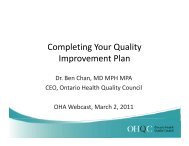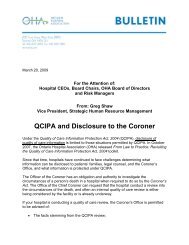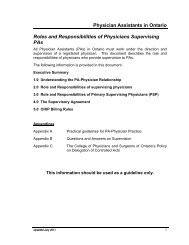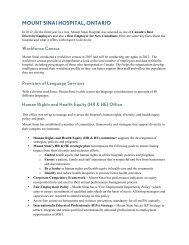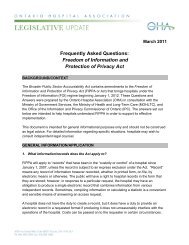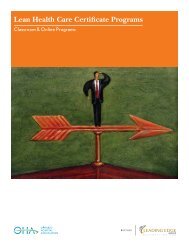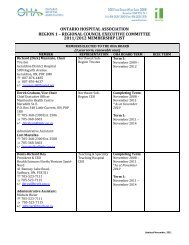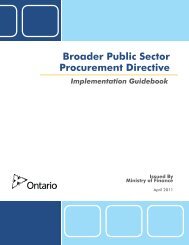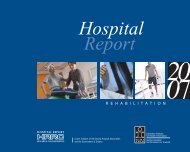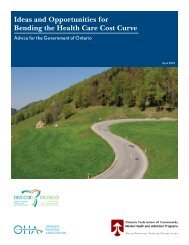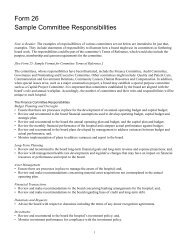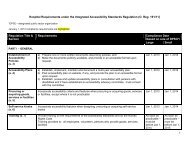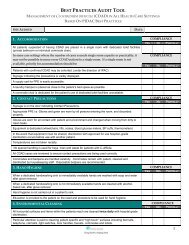The Relationship Between Employee Engagement and Human ...
The Relationship Between Employee Engagement and Human ...
The Relationship Between Employee Engagement and Human ...
- No tags were found...
Create successful ePaper yourself
Turn your PDF publications into a flip-book with our unique Google optimized e-Paper software.
<strong>The</strong>re are several important observations we can make about the Hospital C departments included inthe lowest <strong>and</strong> highest engagement groupings (see Figure 7):• <strong>The</strong> four lowest engagement departments are clinical units providing direct patient care. Thiscontrasts with the four high-engagement departments, three of which provide internal supportservices.• Response rates in the low-engagement group are considerably lower than in the highengagementgroup (41% vs. 59%).• Average head count is slightly higher among low-engagement departments.• <strong>The</strong> differences in engagement scores between the low <strong>and</strong> high engagement groups are clearlyreflected in the percentage of EES participants in each group that can be classified as “highengagement”,using the three-category engagement typology. In fact, the high-engagementdepartments have almost double the proportion of highly engaged employees (58% vs. 31%).Looking specifically at HR metrics, these high <strong>and</strong> low engagement department groupings are furtherdistinguished in the following ways:• <strong>The</strong> management span of control in the low-engagement group is more than double that in thehigh-engagement group (65 direct reports vs. 29).• Because we have maximized the differences between the low <strong>and</strong> high engagement comparisongroups, we can clearly see that high-engagement departments have lower voluntary separation<strong>and</strong> full-time employee absenteeism. This is an important finding, given the impact turnover <strong>and</strong>absenteeism has on costs <strong>and</strong> performance.• Learning <strong>and</strong> development hours per full-time equivalent (FTE) are slightly higher in the lowengagementgroup (4.7 vs. 2.9). This suggests that learning <strong>and</strong> development opportunities haveno direct positive association with employee engagement. This may reflect the occupationalcomposition of some of the low-engagement departments (e.g., nurses whose professionrequires them to take regular training may nonetheless be disengaged).• Sick days among part-time employees are slightly higher in the high-engagement group (3.7 vs.2.7). <strong>The</strong>re is no obvious explanation for this, other than the possibility that high-engagementdepartments more accurately track part-time employees’ absences.• Overtime does not vary across these two groups. One reason for this is the wide variation withinthe departments’ overtime use, reflecting the unique functions performed by differentdepartments (e.g., food services can plan its work load in advance, resulting in zero use ofovertime, while emergency relies on overtime to meet the unpredictable dem<strong>and</strong>s on itsservices).Hospitals considering conducting similar research should contact their employee engagementsurvey vendor to see if this type of analysis is possible. For tips on making linkages betweenemployee engagement <strong>and</strong> key organizational metrics, please refer to Appendix 3.<strong>Engagement</strong> - <strong>Human</strong> Capital Performance Report17



